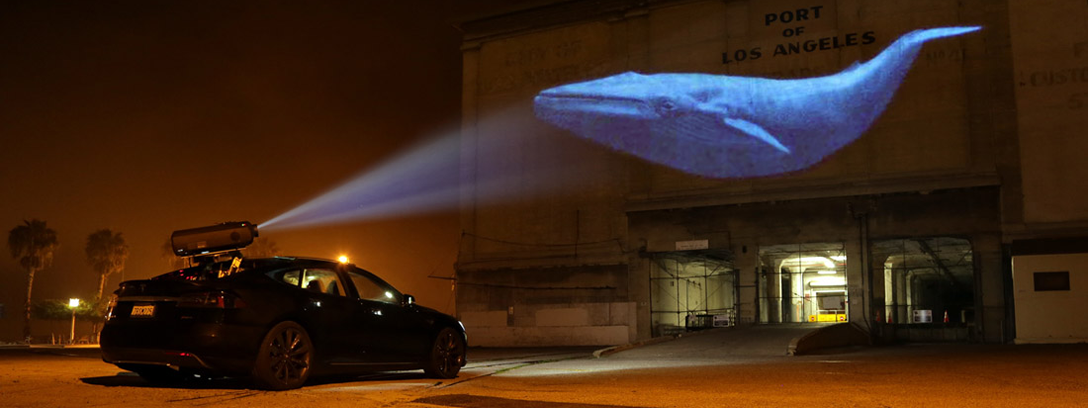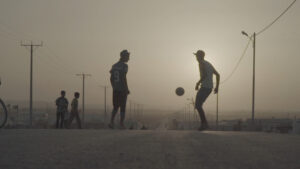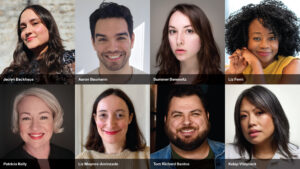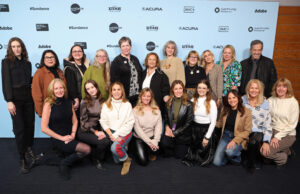Jeremy Kinser
Filmmaker Louie Psihoyos and his team of activists and innovators that made The Cove are back with a new mission to save more endangered species. Where The Cove centered on the plight of dolphins, his latest film Racing Extinction, which premiered early this year in the U.S. Documentary Competition at the Sundance Film Festival, has a broader topic: mankind’s role in the potential mass extinction of half of the world’s species.
A National Geographic photographer and environmental activist, Psihoyos’ new film arrives with incredible anticipation as a follow-up to The Cove, which besides becoming part of the national discourse, won the U.S. Audience Award at Sundance when it premiered in 2009 and later the Academy Award for best documentary. Racing Extinction unfolds like a blockbuster action epic and inhabits the same eco-thriller atmosphere of the director’s prior work.
Viewers might feel they’ve wandered into a white-knuckle espionage flick as they witness Psihoyos and his team infiltrating notorious black markets in China using guerilla-style tactics and James Bond-friendly gadgets, or working with artists to create spellbindingly beautiful imagery with animal subjects (footage of endangered species were projected across the United Nations building).
We spoke with Psihoyos about the challenges and dangers he faced in making the new film and how he hopes it will inspire people to change their daily habits. Racing Extinction opens in theaters Friday, September 18.
Racing Extinction has a much broader scope than The Cove, but do you see it as a continuation of the earlier film?
It’s an expansion on it. It picks up where The Cove left off. I hope it feels more epic. I want viewers to feel they’re in a story, not being told a story. I want it to feel like an adventure story, as well. When people ask me what the movie is like I say, “It’s like The Avengers, but it’s real.” It’s about a group of people who really are trying to save the world. We want it to feel like a Bond movie. The stakes are real, but there are cool gadgets and they’re real. We want it to feel like a tent pole movie. The production values are like a big-budget movie. We certainly tried to make it feel that way. We didn’t have an unlimited budget, but we tried to make the visuals as exciting as possible.
You succeeded. There’s some absolutely breathtaking underwater footage. There are also some very intense and frightening scenes involving your crew. Were you surprised at some of the events you witnessed firsthand?
Absolutely. A lot of people said they wanted to help us out with the undercover stuff, but it was so frightening. It’s one thing to be setting up cameras in the middle of the night as we did in The Cove, but when you’re role-playing in these very dangerous situations, it’s thrilling. It’s also very nerve-wracking to be pretending to be something you’re not. The stakes were raised.
It’s much, much more real than The Cove to me, when we were all hidden. In this situation, we were all role-playing. Heather would be pretending she was the scientific advisor. Paul would be the middleman who brought me in to the situation. Everyone had a role to play and we had to stay in character. This was much more difficult to do that. In Japan, you feel like you’re almost in a western culture, but in China, you really feel like you’ve gone deep into undercover places you shouldn’t be.
Your cameras also recorded some really disturbing images involving manta rays. Did you anticipate some of the horrific things you filmed?
No, not at all. We’d just come back from undercover work in China. Shawn (Heinrichs, the film’s cinematographer) said, “Let me show you some stuff going on in China and Indonesia.” It was horrifying. Indonesia was the largest manta hunting in the world. In the course of the film you see the hope. Indonesia goes from the largest manta-killing country in the world to the largest marine sanctuary for mantas in the world.
How did The Cove winning so many awards help you get the new film made?
It made it a lot easier to raise money. The Cove is probably one of the most award-winning documentaries in history, but we didn’t make any money. We had to pay back our sponsors. That was all made by donations. We’d have gone broke. For The Cove we had a pretty good budget but building the car and doing projections caused us to exceed the budget. We had to keep on finding money. That said, I think the new film is more entertaining than The Cove. There’s a date-night espionage movie element to it.
What message do you want to impart with the new film?
Hopefully, what people will get out of the film is to see what one person or a couple of people can do. There’s a wonderful maxim by Margaret Meade that goes, “Never doubt that a small group of thoughtful, committed citizens can change the world. Indeed it’s the only thing that ever has.” It sounds like Pollyanna, but you see that it can be real. It takes away peoples’ excuse that they can’t do anything. I want people to feel like there’s more hope. I hope the film will inspire a new generation of kids to redesign and build office buildings and houses using solar power and drive solar-powered cars and question their diets and help save the planet, three times a day.




